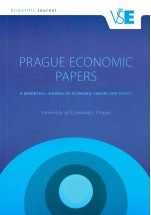Introducing flexible retirement: a dynamic model
Introducing flexible retirement: a dynamic model
Author(s): András SimonovitsSubject(s): Human Resources in Economy
Published by: Vysoká škola ekonomická v Praze
Keywords: Retirement age; flexible retirement age; variable retirement age; transition costs
Summary/Abstract: Mature market economies steadily raise full-benefit retirement ages and add flexible (or variable) retirement age: early/late retirement is punished/rewarded to neutralize the budgetary impact of free choice within wide age limits. New EU member states also raise full-benefit retirement ages, but typically restrict downward flexibility, conditioning it on long enough length of contribution (e.g., Czechia) but sometimes even forsake the deduction (Females40 scheme in Hungary). In this paper, we shall study the costs of removing restrictions on flexibility. In our dynamic model, we show that even if early retirement is duly punished, diminishing the effective retirement age by 1 year raises the first year’s and the total expenditures during transition by 8% and 70% of the original annual expenditures, respectively.
Journal: Prague Economic Papers
- Issue Year: 30/2021
- Issue No: 6
- Page Range: 635-653
- Page Count: 19
- Language: English

